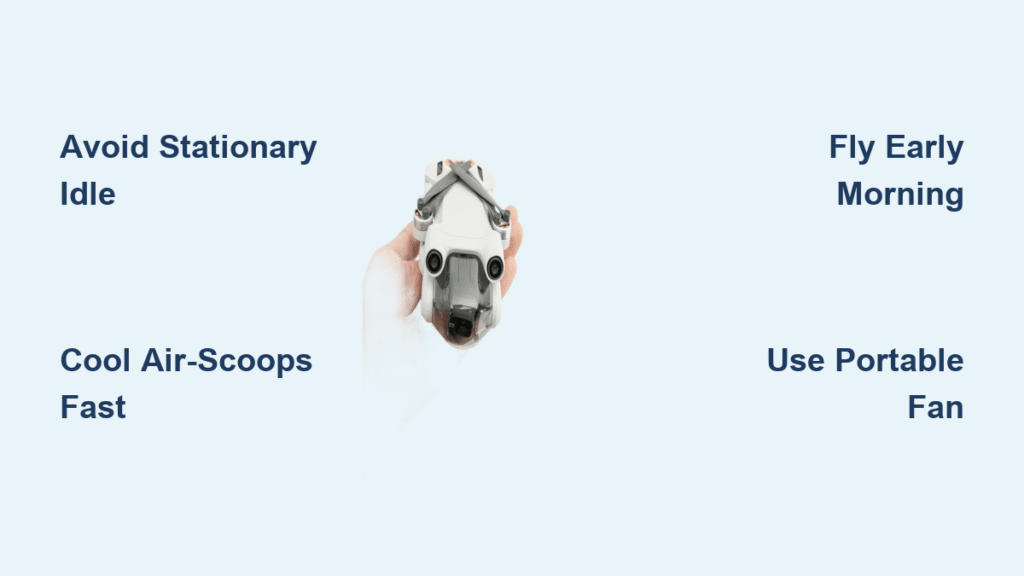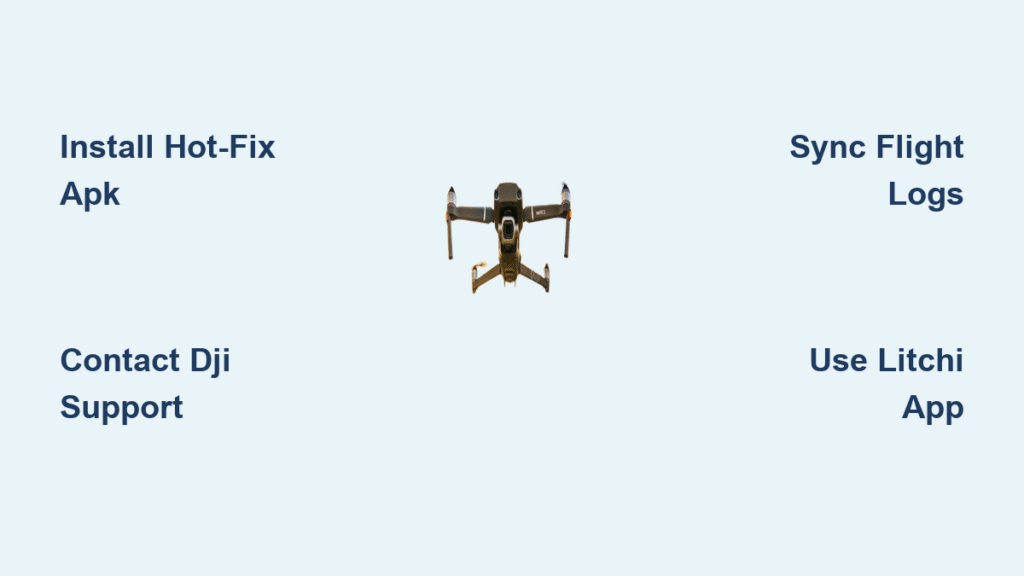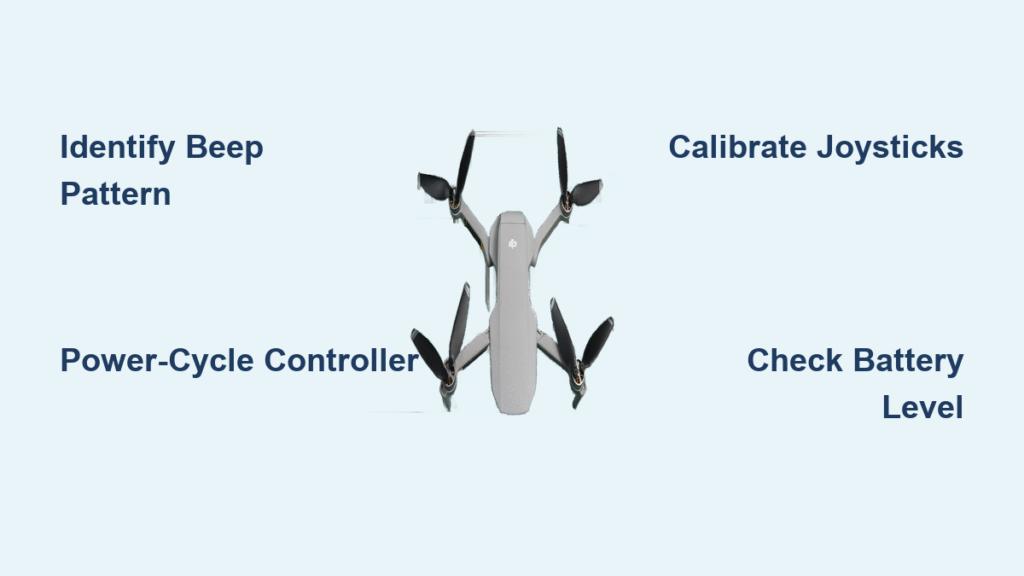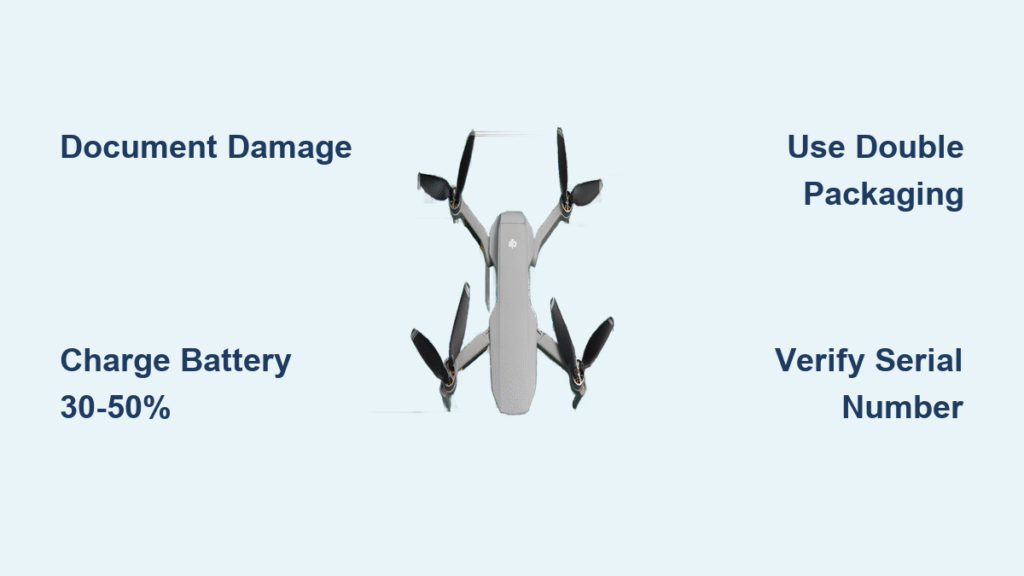Your DJI Mini 3 Pro abruptly lands itself with a “land immediately due to high temperature” warning during a critical sunset shot. You’re stranded with a hot drone and a ruined shoot—while thousands of pilots face identical dji drone overheating emergencies daily. This isn’t random failure; it’s a design reality of Mini and Air series drones. Unlike industrial models with active cooling, your aircraft relies entirely on prop-wash airflow to prevent thermal shutdowns. When stationary or hovering low in hot conditions, heat builds faster than it dissipates. This guide delivers field-tested fixes from 15+ verified user scenarios so you can fly longer safely. You’ll learn exactly why your drone hits thermal limits, spot danger signs before warnings appear, and implement cooling protocols that add critical flight minutes—even in 95°F heat.
Why Your DJI Drone Overheats Without Warning
DJI’s thermal design lacks internal fans in Mini 2, Mini 3 Pro, Mini 4 Pro, Air 2, and Air 2S models. The cooling system depends solely on prop-wash airflow channeled through molded air-scoops across the main circuit board. When stationary during firmware updates or low-altitude hovering, this passive system fails catastrophically. Radiated ground heat from asphalt surfaces adds 10-15°F to ambient temperatures, while direct sunlight accelerates heat buildup. Larger enterprise drones like the Mavic 2 Dual include active cooling, but consumer models become thermal traps without forward motion.
Critical Temperature Thresholds
Your drone triggers automatic shutdowns at undisclosed internal temperatures, bypassing user control. Warning messages like “Land immediately because of high temperature” appear seconds before forced landing. Post-landing, overheated units may power off completely even after touchdown. Mini 3 Pro users report these warnings at just 10 minutes of flight in 90°F weather—well below listed battery times.
Heat Source Locations

Aircraft hotspots concentrate in three zones:
– Main circuit board (hottest area, directly under air-scoops)
– Camera/gimbal assembly (during 4K/60 filming)
– Battery compartment (surprisingly cooler than airframe)
Controller vulnerabilities differ by model:
– RC-N1 overheats fastest due to trapped phone heat + sunlight
– Standard RC runs hotter than Smart Controllers from lower thermal mass
– Smart Controllers dissipate heat better through robust heat-sinking
Common Overheating Scenarios That Ground Pilots
Firmware Updates Without Props
First-time activation sessions trigger extreme heat within minutes. With no prop-wash airflow during processor-intensive updates, Mini 3 Pros reach “RED HOT” surface temperatures—yet remain touchable. This stationary operation creates the most dangerous thermal conditions, requiring immediate intervention.
Summer Flight Patterns
At 90°F ambient temperatures, Mini 3 Pro flight times plummet to 8 minutes before shutdown warnings. Radiated heat from ground surfaces combines with hot air to overwhelm cooling. Users testing in Greece (95°F) report flights ending after just 6 minutes without aggressive thermal management.
Consecutive Battery Swaps
Three back-to-back Mini 2 flights at sundown create cumulative heat buildup. Even without warnings, the airframe becomes “unusually hot to touch” while batteries stay merely warm—proving heat originates in electronics, not power systems. Skipping cool-down periods between flights guarantees thermal failures.
Quick Visual Inspection Steps Before Every Flight
Scan these critical indicators:
1. Touch test: Airframe should feel warm, not uncomfortably hot
2. Battery check: Should feel cooler than the aircraft body
3. Vent inspection: Clear debris from air-scoops under propellers
4. Controller screen: Auto-dimming indicates overheating
Abort immediately if you notice:
– Aircraft too hot to hold for 5 seconds
– Any high-temperature warnings in the app
– Controller screen fading or flickering
Prevent Thermal Shutdowns During Operations

Immediate Actions When Powered On
Never let your drone idle on the ground. The moment you power up:
– Start props spinning or launch within 10 seconds to activate airflow
– Climb above 100 feet rapidly to escape radiated ground heat
– Maintain forward motion—hovering below 50 feet doubles heat risk
Environmental Management
Ground operations:
– Avoid asphalt surfaces—opt for grass to reduce radiated heat
– Use natural shade for setup and battery swaps
– Fly early morning when ambient temperatures are lowest
Controller protection:
– Reduce screen brightness to 50% or lower
– Create instant shade with a folding umbrella
– Remove phone cases on RC-N1 setups for better heat dissipation
Cool Down Between Flights Like a Pro
Mandatory Cooling Protocol
After landing:
1. Power down completely—don’t just pause the app
2. Wait 10 minutes before battery swaps if airframe feels hot
3. Use a portable fan for rapid cooling in 90°F+ conditions
4. Log flight temps to establish personal thermal limits
Field Cooling Solutions
Essential gear for hot climates:
– Battery-powered desk fan: Critical for firmware updates
– USB-C clip-on fan: During 4K file transfers to prevent heat buildup
– Cooling pad: For controllers during extended sessions
Battery vs Airframe Temperature Truths
Plus-sized batteries stay “warm, not hot” even when your aircraft triggers shutdown warnings. This proves heat originates in the main electronics—not battery discharge. Focus cooling efforts on the airframe body, not the battery compartment. The temperature disparity explains why Mini 2 users sometimes experience hot surfaces without app warnings: battery sensors remain within limits while circuit boards overheat.
Controller Overheating Solutions That Save Flights
RC-N1 (Phone Holder) Fixes
Compound heat sources—phone processor + sunlight + no airflow—demand action:
– Remove phone case immediately for better heat dissipation
– Angle controller away from sun during flight
– Set brightness to 30%—most pilots find this usable in shade
Standard RC Screen Stabilization
Built-in screen controllers run hotter than Smart Controllers due to lower thermal mass. Critical adjustments:
– Attach a mini-umbrella to the controller
– Fly with screen at 40% brightness
– Place controller on cool surfaces during pauses
High-Temperature Flight Planning Checklist
Pre-Flight Checklist for 90°F+ Days
- Schedule flights between 6-9 AM for 50% longer flight times
- Limit flights to 8 minutes in extreme heat
- Pack a portable fan and shade solution
- Pre-cool batteries in an insulated bag
In-Flight Heat Management
During flight:
– Avoid hovering below 50 feet—keep moving forward
– Climb above 100 feet for cooler air layers
– Downgrade to 2.7K resolution to reduce camera heat
– Land at first warning—ignoring alerts risks automatic shutdown
Emergency Cooling Techniques for Active Flights
When Overheating Occurs Mid-Flight
Execute this sequence immediately:
1. Land at nearest safe spot—don’t try to reach home point
2. Power down aircraft to stop heat generation
3. Move to full shade—even 5 minutes helps
4. Apply cool surface (like water bottle) to air-scoops
5. Wait 15+ minutes before restart
Controller Overheating Response
Loss of signal prevention:
– Land aircraft immediately if controller screen dims
– Cool controller body with damp cloth on sides
– Reduce brightness to minimum while cooling
– Restart connection only after full cooldown
Summer Holiday Operating Limits Tested
Real-World 95°F Performance Data
Greece field tests (35°C/95°F) confirm:
– Maximum flight duration drops to 6-8 minutes
– Cooling breaks between every battery are non-negotiable
– Morning flights provide 50% longer airtime
– Controller shade is equally critical as aircraft shade
Build Your Personal Thermal Log
Track these variables after each flight:
– Ambient temperature and surface type (asphalt/grass)
– Flight duration before first warning (if any)
– Airframe “touch test” temperature rating
– Required cool-down time between batteries
Key Takeaway: DJI’s passive cooling design demands active thermal management from pilots. The difference between a successful shoot and a forced landing often comes down to 30 seconds of pre-flight airflow or 10 minutes of cooling between batteries. Start implementing these protocols today—begin with the 90°F+ pre-flight checklist and log your first week’s temperature data. Within days, you’ll establish your personal flight boundaries, turning thermal shutdowns from inevitabilities into preventable events. Your drone’s endurance in hot conditions isn’t limited by its design—it’s limited by your cooling strategy.




